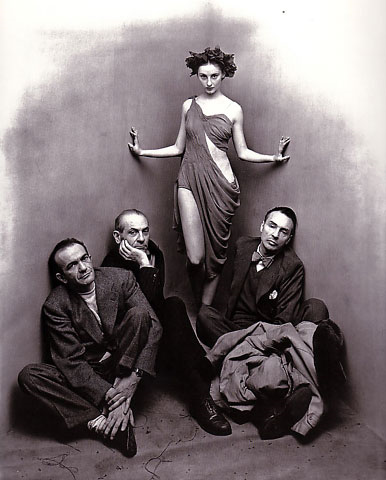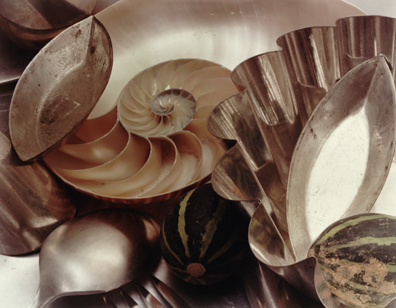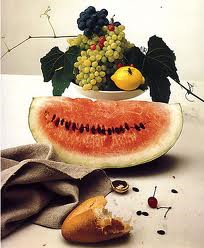Every area of human activity is divided into certain periods with regard to the technological development, changes in social behavior, shifts in political regimes, and distribution of power. Photography is a branch of contemporary arts that is influenced by a great number of internal and external factors.
Different types of films and filters were used for many years to produce the image visible for human eyes but impossible to reproduce in photographs. All difficulties and obstacles advanced technological innovations and enabled photographers to take pictures without necessity to wait for printed pictures to come in a week.
However, outstanding photographers of their time took the challenges and invented their own methods to make the invisible visible and vice versa. Thus, it is necessary to analyze some works made by Irving Penn and Jan Groover who managed to benefit from use of black and white in their still life photographs and while shooting models and objects for fashion magazines.
Irving Penn And Jan Groover
Both these photographers are known for their talent and attention to details. Arrangement of the objects for a photograph is very important and this importance can be understood while looking at pictures taken by Irving Penn and Jan Groover. Use of color images is contrasted to black and white though both authors used different patterns while taking pictures of models for fashion magazines and still life pictures, some aspects of their work are different while others are similar.
Images of nude people and kitchen utensils were depicted in the most unexpected ways using specific arrangement of objects, certain color choice, light and shadow techniques and other special approaches that enabled a photographer to convey his/her message and show the things and people in the way he/she saw those.
Every decade brought something new to the world in terms of technological advancement; photography was not an exception. New techniques and brighter colors shifted the priority though did not change the talent and approach used by Irving Penn and Jan Groover.
Involvement. The involvement in terms of photography presupposes that an author is involved into a certain area, genre, or a single technique. This aspect is very important for contemporary authors as it enables us to trace the changes in the involvement of these two great photographers.
Irving Penn is known for several large involvements each being a theme of n exhibition as well as Jan Groover who had also established her style; certain themes and genres prevailed in the photographs of both authors depending on the period of their development. The involvement can be seen in the series of still life and nudes made with the help of certain techniques.
Thus, Irving Penn used silver and platinum prints while creating a series of photographs “Earthly Bodies” in 1949-1950. This technique enabled the author to present human bodies in the most unexpected angles and poses. In this respect, the pictures seem to reflect the real meaning imposed by the author concerning the beauty of bodies regardless of their imperfectness. He arranged the compositions so that all these people looked attractive.
We can assume that these bodies would not look attractive if they were not arranged and printed with the help of palladium and platinum. For instance, the picture “Nude No. 70” (see Fig. 1) is a part of the “Earthly Bodies” (1949-1950) series was acknowledged as well as other photographs from this series only when a few decades passed because they were avant-garde for their time.

Another major involvement of Irving Penn was the portraits and people from the real life and famous people that often appeared on the covers of magazines such as Vogue. For instance, his wife, Lisa Fonssagrives married him in 1950 after a picture taken for Vogue depicting models that could have been seen on the cover of Vogue in different issues and volumes (“Penn’s People” 103).
As you can see from the Figure 2, the author managed to depict beautiful women without making attempts to single out one person and make her a center of the composition. Irving Penn made wonderful portraits that were treated as masterpieces due to the perfect arrangement of things and people in the pictures. Every object could look appealing when appropriately arranged – this was the major idea of the author.

Jan Groover was more involved in taking still life pictures. While Irving Penn thoroughly arranged the objects to depict them in his works (Inc Icon Group International 86), Jan Groover said about the arrangement: “With photography I didn’t have to make things up. Everything was already there” (“Photography” 76). In this respect, Jan Groover claims that all objects were not intentionally arranged. However, this cannot be truth for the picture “Untitled” created in 1983 (see Fig. 3).
This shows us the main involvement of this author as she seems to be obsessed with different fruits, vegetables, knives, forks, and other objects that present still life. Triptychs and diptychs can be considered another involvement of Jan Groover as she uses this technique of depicting the same theme in three different ways and presenting these as a single unit.
This means that the common involvement of these two artists was the depiction of still life whereas nudes and household utensils can be considered the most obvious difference. Moreover, both author used white and black as well as color photographs to show how these objects can be understood, instead of showing just objects as everybody can see those in the day-to-day life. Still life was the major involvement of Jan Groover whereas portraits were the major involvements of Irving Penn.

Formal approach. The formal approach to depiction of different objects and arrangement of the things can be considered typical of works created by Irving Penn. The author managed to organize the things in the way they would look more appealing and benefit from this angle, filter, color use, and other aspects of every photograph.
Every picture can be taken as it appears; however, the author tried to show the things and people as they should be perceived instead of making things obvious. Thus, the meaning of the things can be better understood while looking at pictures by Irving Penn.
Jan Groover uses another formal approach by depicting some areas and objects with the help of the method that presupposes depiction of different objects or people with regard to a single topic of these pictures making a single unit that should be perceived as a single piece of arts. Thus, she uses triptychs and diptychs to show the same things with a specific vision.
For instance, the picture “Untitled” created in 1977 contains flower pots with flowers; the use of color can be considered one of the prominent characteristics of this diptych and the idea that unites these two parts of the whole unit.
However, the formal approach taken by Jan Groover can be called the method of taking pictures in the way they can be found in the real life as the author manages to show us her vision of those arrangement that were not arranged intentionally.

Photographic syntax. As every sentence in human speech consists of certain parts, a picture consists of a frame, light, shadow, gloss, mat surface, or other aspects that may positively contribute to the overall comprehension of what was meant by the author.
As every author uses some techniques and methods typical for his/her works, it is necessary to take into account the periods in the work of different photographers and their formal approach to taking pictures and arrangement of objects. In this respect, the pictures created by Irving Penn and Jan Groover are absolutely different because these two authors use different structures to create their masterpieces hence making the works more recognizable and appealing.
For instance, the picture “Members of The Ballet Society” created in 1948 by Irving Penn can be considered one of the strongest evidences of the outstanding photographic syntax used by this photographer. The most prominent aspect of this masterpiece is the arrangement of people as the girl appears to be in the center whereas she is also standing in the corner. This can be considered an allegory because the corner is used to reflect the real nature of these people. The author made them attractive and mysterious in a way.
Though all the four do not look tired or exhausted, three of them, the men, are sitting on the floor creating in this way a ground of the picture whereas the upper corners of it are intentionally left blank with the help of white color imposed and blurring as the technique that helps to make obvious things less clear and more ambiguous so that every viewer could invent his/her own meaning for this picture.

The pictures created by Jan Groover have their own unique photographic syntax as they are composed using the household utensils and vegetables. The pepper could not be depicted in a more appealing way that it was by Jan Groover. Thus, the author uses different colors, experiments with lights and shadows, implements black and white objects and applies other techniques to her photographs.
One of the characteristics typical for a great number of her works is that the main objects are not always depicted in the center of the composition. This aspect makes the composition look more natural and real instead of making it more glamorous and artificial. Thought the objects and people are arranged perfectly in the pictures created by Irving Penn, they do not look artificial or unnatural.
Art and technological determinism. As the technological advancement means a lot for photography, we should analyze the impact of technological determinism on the photographs created by Irving Penn and Jan Groover. Though most of their pictures were in avant-garde of their time and were acknowledged only some decades after their creation and presentation, this can be explained by technological determinism and other factors that influenced the photography greatly.

One of the aspects that influenced all areas of human lives in all times was the scope of changes that took place in the political, economic, and social life all over the world, in specific countries and areas, and in a certain neighborhood. Thus, nudes were popular in the period when every photographer thought it necessary to present his/her vision of human body through the images of naked people.
Though every author used specific colors, he/she could create something different from his/her usual works after being inspired with the contemporary tendencies. However, the range of topics should not be identified as one of the aspects that determined the use of technological equipment because the films and filters were the basic technological determiners for Irving Penn and Jan Groover as the author that managed to create outstanding pictures without technologically advanced materials.
The most typical of all pictures can be considered the use of platinum and palladium that were applied to the pictures to make them more glossy and three-dimensional.
Another technique that was used for color pictures were the chromogens used alternatively to the use of silver halide pigments to produce the image. Moreover, the work of chemical laboratories was one of the obstacles that made the production of images more time-consuming and reduced the scope for experiments.
While most pictures created by Irving Penn were produced with the use of platinum and palladium as the main compounds, Jan Groover implemented the use of chromogenic pigments. This fact can be explained with regard to the color of pictures prevailing in the works produced by both authors.
As Jan Groover used a limited tonal range and combined different tonal ranges in one picture including muted colors though fewer black and white pictures, Irving Penn used mostly black and white pictures to convey his message to the viewers. In this respect, the technological determinism can be viewed in the works by both authors contrasted to the color choice that was varied by both.
True subject. The true subject can be usually noticed after thorough examination of the work. Sometimes, there seems to be no meaning at all whereas other works are full of hidden meanings that can be changed in accordance with the context in which the story reveled in the picture appears. In this respect, the work “Untitled” created in 1979 by Jan Groover can be considered one of the most vivid and brightest pictures in terms of the theme (see Fig. 7).
This idea enables us to analyze this picture assuming that every little object has its own story that contributed to the overall meaning of the picture. In other words, vegetables, kitchen utensils and shells look very natural though it is unlikely for these objects to appear in this combination naturally. However, the composition presupposes that the mess created artificially was aimed at becoming the ground for the picture.
This picture shows how the simplest things can be arranged in the most harmonious manner and that even the objects that seem difficult to combine can be used in the most unexpected settings as well as peaceful negotiations can be held between countries that have been in war for years.

The pictures created by Irving Penn are marvelous due to the use of mostly black and white colors and perfect arrangement of the photographic syntax. Thus, his works seem to be full of hidden meaning making the viewers admire the depth of depiction and integrity of all objects presented in the picture. The same concerns the photograph created by Irving Penn in 1947 “Still Life with Watermelon” (see Fig. 8) where the author suggests his vision of a still life picture.
This image combines fresh fruits and a loaf of bread that was tried by a person. These objects are perfectly combined so that a viewer can experience hunger while looking at this picture. In other words, the real subject of this picture can be considered the hunger. Moreover, there can be a hidden message about the help that should be provided to those nations that suffer from famine.

Conclusion
To conclude, it is necessary to say that both authors can be considered genii of their time because they managed to create outstanding pictures regardless of technological determinism and lack of appropriate materials to produce images and catch the most gentle and lightest movements and details. Every picture is arranged perfectly in the works by Irving Penn whereas Jan Groover claims her pictures to be taken almost spontaneously as she took them when everything was naturally arranged by a mess or a situation.
In this respect, use of colors, the photographic syntax and other aspects related to the works of both authors determine the main difference and similarities of their photographs. Lack of materials did not prevent them from taking pictures that are acknowledged by contemporary audience as the most outstanding pictures of all times.
Works Cited
Begleiter, Steven. The Art of Color Infrared Photography. Buffalo, NY: Amherst Media, Inc, 2001. Print.
Inc Icon Group International. Penn: Webster’s Quotations, Facts and Phrases. San Diego, CA: ICON Group International, 2008. Print.
“Penn’s People.” Life 14 Nov. 1960: 103-109. Web.
“Photography.” New York Magazine 12 Sep. 1988: 76-78. Web.